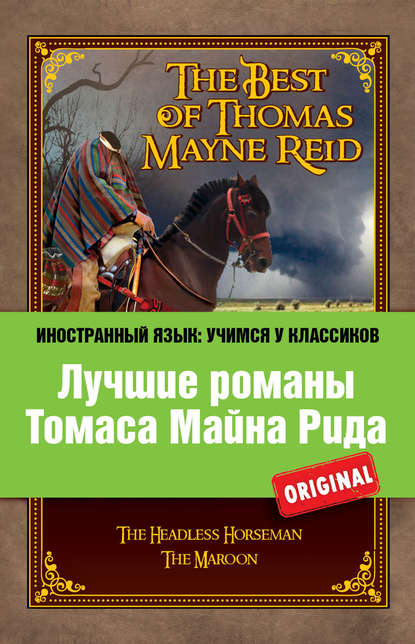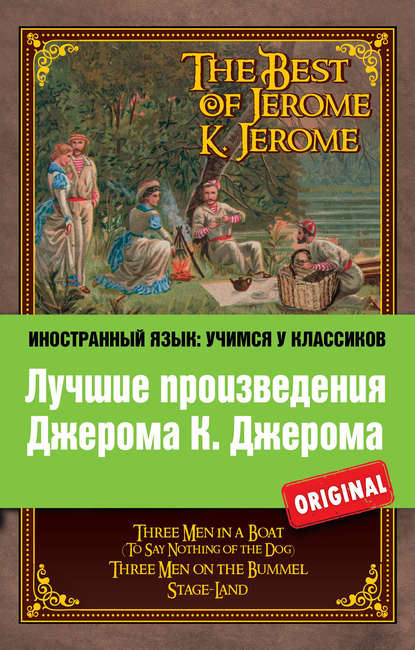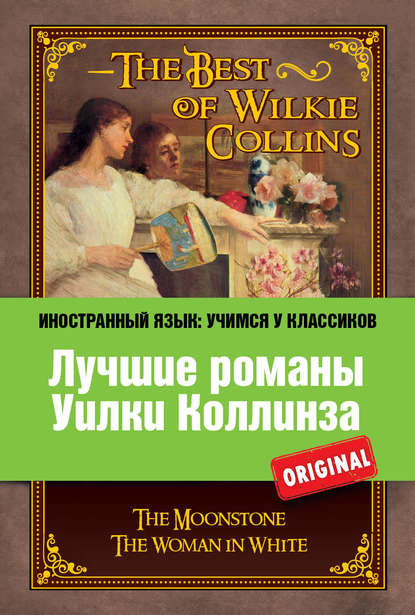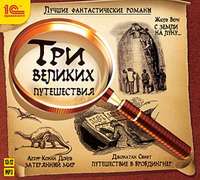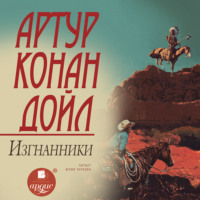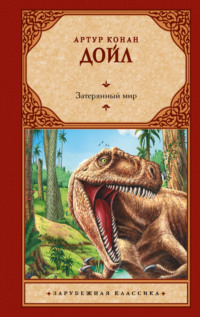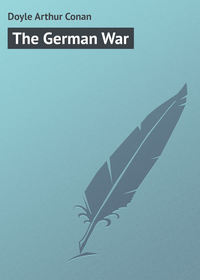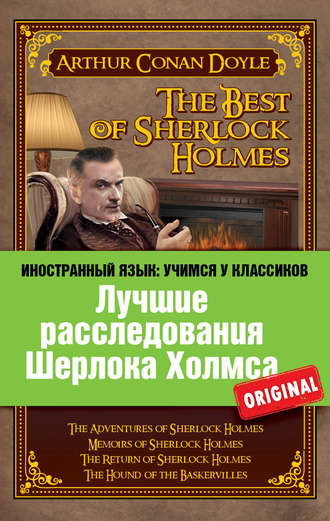
Полная версия
Лучшие расследования Шерлока Холмса / The Best of Sherlock Holmes
31
napoleons – an informal name of French golden coins. In different periods of time their value varied from from 5 to 100 francs.
32
partie carrée — foursome (French)
33
L’homme c’est rien – l’œuvre c’est tout – The man is nothing, the work is everything! (French)
34
as Gustave Flaubert wrote to Georges Sand – it is really a quotation from the letter of famous author Gustave Flaubert (1821–1880) to another famous author, Georges Sand (1804–1876, real name Aurore Dupin), though the original phrase was “L’homme n’est rien, l’oeuvre – tout.”
35
affaire de coeur – love affair (French)
36
King’s Cross – an area of central London. The name of the district is due to a monument to George IV erected there in the 1830s. The monument was demolished in 1845, but the area still keeps its name. In 1852 there was opened King’s Cross railway station.
37
four-wheeler (aka the growler or the Clarence) – a closed four-wheeled carriage that seated four passengers. It was a standard cab in Victorian London.
38
Harris tweed – a type of tweed cloth woven from pure virgin wool on the Outer Hebrides of Scotland: Lewis, Harris, Uist and Barra. Harris tweed is handwoven and produced only of the wool dyed and spun on the Islands.
39
an action for breach of promise – in Victorian Britain it meant court proceedings when a man who had promised to marry changed his mind afterwards
40
Paddington = Paddington Railway station (aka London Paddington); it was opened in 1838. It served the eastern terminus for the Great Western Railway (from Bristol to London). In 1863 the first underground passenger-carrying railway (the Metropolitan Railway) was opened between Paddington and Farrington.
41
Herefordshire is a county in Western England
42
(The Courts of) Assizes were courts held by visiting judges at the principal towns of each county not to make the litigators travel to London. The Assizes dealt mainly with serious crime cases transferred by local county courts.
43
coroner’s jury — coroner is an official whose duty is to discover the cause of individual’s death in criminal or possibly criminal cases. In the 19th century British coroners conducted inquests with the help of a jury.
44
The River Severn is the longest river in the UK (about 354 km). It flows from Plynlimon, Wales through Shropshire, Worcestershire, Gloucestershire, Monmouthshire, and discharges into the Bristol Channel.
45
Bermuda Dockyard — Her/His Majesty’s Dockyard on Ireland Island, Bermuda was established after the defeat of the UK in the American War of Independence. It served as an important strategic base of Royal Navy for about 150 years. In the 19th century the Dockyard was employing about 1000 Bermudians as well as using the labour of convicted criminals from the UK.
46
George Meredith (1828–1909) was an English Victorian poet and novelist.
47
Clark Russell’s – William Clark Russell (1844–1911) was a popular Anglo-American nautical and horror novels author.
48
Jackson’s army, and afterwards under Hood – Henry Rootes Jackson and John Bell Hood were Confederate generals during the American Civil War.
49
Lee – Robert Edward Lee commanded the Confederate Army. His surrender to Union General Ulysses S. Grant at Appomattox Court House on April 9, 1865 ended the American Civil War.
50
Portsdown Hill is a chalk hill about 430 ft. high to the north of Portsmouth. In the 1860s along the crest of the Hill 6 forts were constructed to prevent an enemy from capturing the heights of the Hill and bombarding Portsmouth and the British fleet in Portsmouth harbour.
51
Waterloo Station located in South Bank was opened in 1848. It had been intended that Waterloo Bridge Station would serve only as a through station on the way to the City. As the Station became a terminus, it was rebuilt in 1853 and after that suffered a lot of rather hazard reconstructions.
52
Baron Cuvier, Georges-Léopold-Chrétien-Frédéric-Dagobert (1769–1832) was a French naturalist, the establisher of paleontology.
53
D.D. stands for Doctor of Divinity (Divinitatis Doctor in Latin).
54
De Quincey’s description of his dreams and sensations – Thomas Penson De Quincey (1785–1859) was an English essayist, the author of the book “Confessions of an English Opium-Eater.”
55
Dog-cart (aka trap) is a type of open horse-drawn vehicles popular in Victorian Britain. Dog-carts were used to carry passengers or to drive out with dogs to hunt. Dog-carts had many modifications, two-wheeled one-horse carriage with high seats was the most typical one.
56
Cannon Street station (aka London Cannon Street) is now a railway terminus and underground station in the City of London. It was opened in 1866 to serve as a central London terminus for the South Eastern Railway that chained London and Dover. Branch lines connected towns of Surrey and Kent with the main line.
57
10s — “S” stands for “stone”.
58
Vesta (the name taken from the Roman goddess of hearth and home) is the trade name for strike-anywhere wax matches patented by William Newton in 1832. Wax vesta had a cotton wax-covered wick tipped with phosphorus. Users carried special small boxes (vesta cases, match safes) to house vestas as they were prone to auto-ignition.
59
mousseline de soie is a fine lightweight semi-opaque crisp fabric made of silk
60
Gladstone bag was a suitcase built over a rigid frame which could separate into two equal sections. The manufacturer of the first Gladstone bag was a great admirer of William E. Gladstone, the four-times British Prime Minister who travelled a lot.
61
Bow Street Covent Garden, Westminster – a place where London Magistrates’ Court and the oldest police station of the Metropolitan Police were located
62
26s 4d. – “S” stands for “shilling” (from the Latin “solidus”), “d” – for pence (from the Latin “dinarius”).
63
disjecta membra – scattered fragments (Latin)
64
the Museum = the British Museum, one of the most famous and comprehensive museums dedicated to human history and culture. It was established by the Act of British Parliament in 1753 and opened to public in 1759.
65
Pentonville – Her/His Majesty Prison Pentonville is a men’s prison in London. Opened in 1842, it is still in operation today.
66
jail-bird – an old-fashioned informal term for “prisoner”
67
The Regency (1811–1820) is a period when the Prince of Wales ruled the country as Prince Regent because King George III had been deemed incapable to rule due to mental illness. In 1820 King George III died and the Prince of Wales became King George IV.
68
baboons – actually baboons aren’t Indian animals, they are found only in Africa
69
“Jack-in-office” – an annoying self-important minor official
70
Doctors’ Commons – initially it was an association of lawyers who specialized in civil law, similar to the Inns of Court (though the Inn’s members specialized in common law). From 1565 to 1858 Doctors’ Commons resided in Paternoster Row, near St. Paul’s where civil records were stored. In 1858 the society was dissolved.
71
Eley is a British firm still manufacturing rimfire ammunition. It was started in 1820s by brothers William and Charles Eley. They specialized in patent cartridges, so Eley’s № 2 must refer to a cartridge, probably for Webley revolver.
72
Wilton carpet is a woven wool carpet noted for its original looped or cut-velvet texture and for having up to five colours in a pattern. Wilton carpets were first manufactured in Wilton, Wiltshire, England in 1740s. In Victorian Britain a Wilton carpet was a luxury.
73
William Palmer (1824–1856) aka Rugeley Poisoner was an English doctor convicted of poisoning his friend John Cook and suspected of poisoning his wife, mother-in-law and four infants.
74
Edward William Pritchard (1825–1865) was an English doctor convicted of poisoning his wife and mother-in-law.
75
A swamp adder (Proatheris superciliaris) is really a venomous snake, though it resides in East Africa, not India.
76
Carbolised bandages – that is, bandages with carbolic acid (phenol); in the 19th century it was used as antiseptic.
77
agony column is a newspaper’s column containing advertisements of missing people. The term can be also used for advice column.
78
The Times is the most famous British daily newspaper, founded in 1785. By the middle of the 19th century The Times gained reputation of the most influential British newspaper and was extremely popular.
79
Fuller’s earth is a fine-grained substance that consists mainly of hydrated aluminum silicates and absorbs fat, grease and oils. Initially Fuller’s earth was used in textile industry to clean raw wool.
80
Harmonium (aka Reed Organ aka Pipe Organ) is a small organ popular in Britain in the 19th century.
81
monomaniac – a person suffering from monomania. In the 19th century monomania was a diagnostic category in psychiatry. Monomaniacs were supposed to be partially insane, being quite normal people in every respect but for one idée fixe.
82
Jezail was a type of musket used by Afghan tribes in the Anglo-Afghan Wars.
83
Plantagenet – The House of Plantagenet was a royal dynasty which ruled England from 1154 until 1485.
84
Tudor – The House of Tudor was a royal dynasty that ruled England and its realms from 1485 until 1603.
85
distaff side is the female branch of a family
86
The Morning Post was a conservative daily newspaper published from 1772 to 1937.
87
peeress is a title of nobility applied to a woman. The British Peerage is an ancient still-existent legal system of nobility. In the 19th century peerage was inheritable.
88
St. George’s Hanover Square is a fashionable Anglican church in central London, place of many noble weddings.
89
basket-chair is a twigged curved armchair with back and arms in one. Basket-chairs were very popular in Victorian times.
90
Scandinavia is a historical region in Northern Europe. In the 19th century as well as today it included three Kingdoms: those of Denmark, Norway and Sweden.
91
tomboy is a girl who behaves like a boy
92
fait accompli – accomplished fact (French), something that has already happened and can’t be reversed.
93
Thoreau, Henry David (1817–1862) – an American poet and practical philosopher, known as the author of the book “Walden” dedicated to nature-friendly simple lifestyle.
94
Рâté de foie gras is goose liver paste usually made of the liver of a specially fattened bird.
95
Union Jack is an informal name of the UK flag. It derives from a small British union flag flown as the jack of a ship. It symbolizes the union of crowns of England, Scotland and Ireland as it is formed of a combination of the crosses of St. George (England), St. Andrew (Scotland) and St. Patrick (Ireland).
96
Northumberland Avenue is a fashionable street named after the Dukes of Northumberland that stretches from Trafalgar Square to the Thames Embankment. In the 19th century its name was synonymous with luxury hotels: The Metropole Hotel, the Hotel Victoria, the Grand Hotel.
97
Morocco case is a case covered with morocco leather, which is leather made of goatskin and bearing a bird’s-eye pattern on the grain side.
98
Streatham is a South London district. It was a fashionable “dormitory” suburb of Victorian London.
99
Carriage-sweep is a semicircular drive for carriages in front of the manor entrance.




